How Many Service Area Locations Are "Too Much" for SEO?

Local SEO has a lot of little questions that come up in relation to how people search for local results, which aren't really reflective of non-local SEO at all. They're the kinds of questions you need an answer to if you want to succeed as a local business, but they're harder to answer because people just don't talk about them as much.
One of these is a discussion of service areas. Service areas are defined regions where your business operates, and which you can plug into profiles like the Google Business Profile, and which you can use to make landing pages to capture local SEO.
They're very important! Without a defined service area for a location where you operate, people searching for your category of business might not find you listed at all.
A big question you need to answer is: how many service area locations should you add, and to where? Can you get in trouble, SEO-wise, if you add too many? It's not as straightforward as you might think.
Is There Such a Thing as Too Many Service Areas?
First, let's address the capstone question: Is there such a thing as too many service areas, at all?
The answer here may be no, but there are some hard limits that can make it difficult to test.
The biggest hard limit you'll run into is with Google's Business Profiles. Since Google's Business Profiles are how you inform Google of the specific information relevant to your business, so it can show up in local pack results, you want to have the best slate of service areas to represent your brand.
Google's Business Profiles allow a maximum of 20 service areas. There are, however, two tricks to this that I'll discuss in a bit.
What about for your website? If you list out service areas or make service area pages for each service area you have, can you run into problems if you have too many of them?
In this case, I think the answer is no.
For example, consider a national-scale company like Terminix, which provides pest control services all across the country. They have location pages for every state (here's California's), which list each brand location they have. Each brand has a page as well (like this one), which is largely identical across all different branches, but has distinct copy, so they aren't just 1:1 replicas of each other.
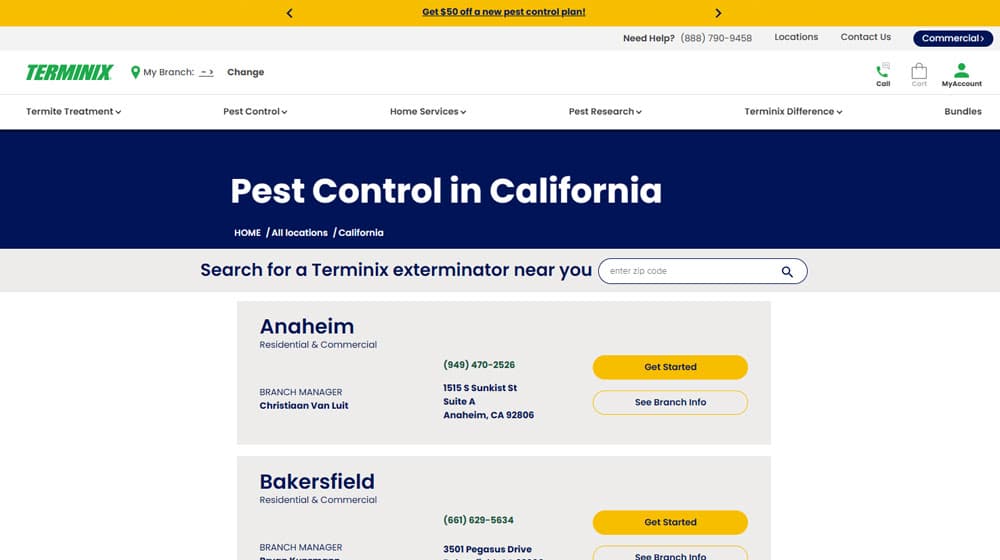
Then again, we all know that the rules that apply to small businesses might not apply to national companies. But then, a small business isn't likely to have hundreds of locations, so it's kind of a wash.
Skirting the Limits on Google's Business Profiles
I mentioned above that Google's Business Profiles only allow a business to have up to 20 service areas. That's a number taken directly from their help center article on the subject. Yet we all know of examples of companies with more than 20 locations in a single state (or even a single city in some cases), and they all get their own listing. How do they do it?
There are two ways that a business can skirt this limit.
The first is by making quite large service areas. A service area can be a whole city or a zip code, and the specific boundaries can be very flexible. Google's only guidance is "The boundaries of your overall area shouldn't be more than about 2 hours of driving time from where your business is based." That can be a pretty big service area!
The second option, and the one used by most of those national-level companies, is to use Google's franchising tools. It's not like every individual McDonald's location has its own Google Business Profile managed by a local manager, right?
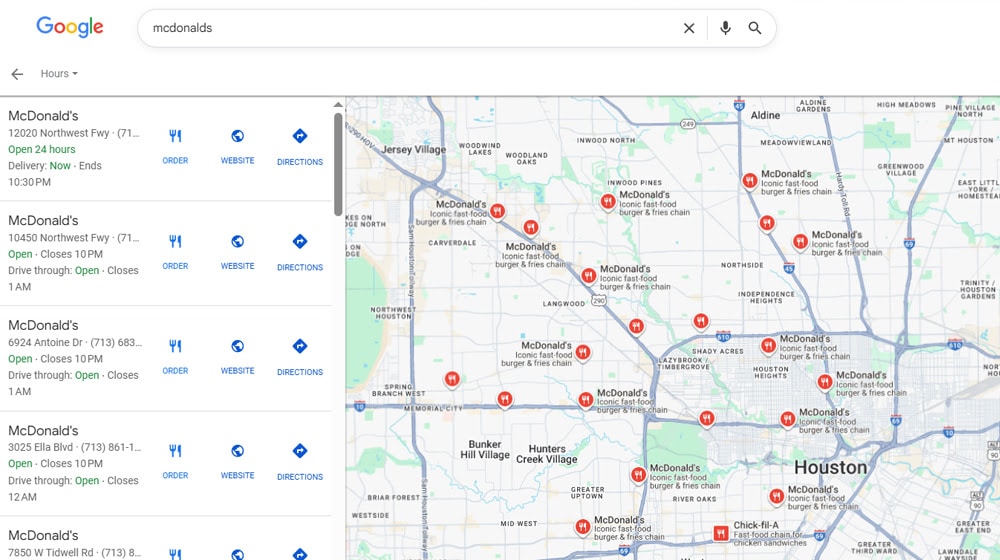
This is usually done using a corporate account, which has additional requirements, like using an email address with the company domain. Google allows bulk uploading of information about franchise locations, which streamlines the process immensely for companies with hundreds or thousands of locations and service areas.
Service Area vs Address
One consideration you should give some thought to is whether a service area is even necessary or appropriate.
A service area is generally meant for businesses that go out from where their location is, to perform their service. Terminix goes out to homes to handle wildlife or treat for pests. Each place they can go out to is a service area, but they want to define those service areas so they don't get people calling them when they're way outside of what's feasible to visit, financially.
Conversely, a company like a restaurant that doesn't do delivery (except through third-party services like DoorDash) wouldn't want a service area. It's not like they'd turn away someone from outside that area if that someone drives into the location. Instead, all they need to add is an address, and Google's local pack does the rest.
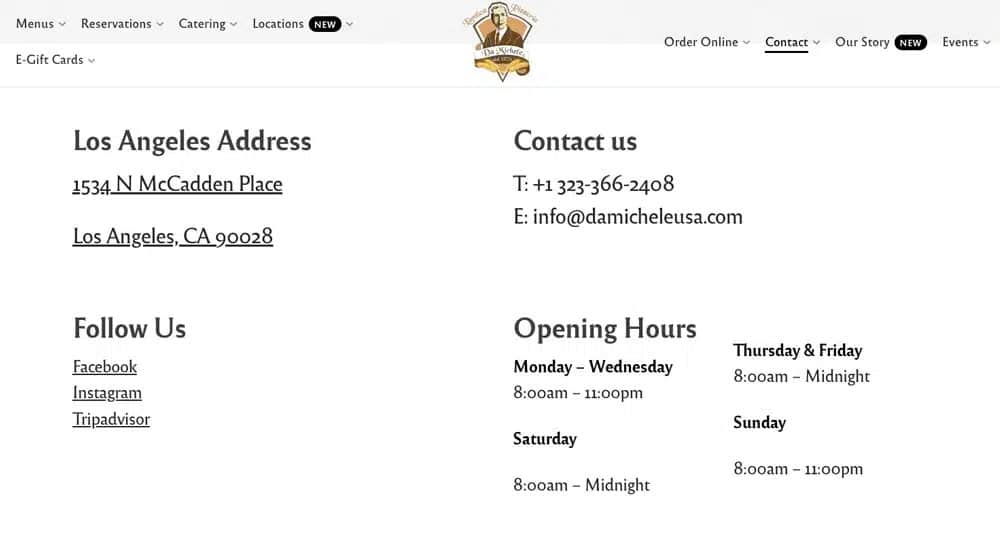
Combine this with franchising. An individual location can have up to 20 service areas, and a franchise can have a potentially unlimited number of locations.
In this case, service areas might be local zip codes or even local neighborhoods.
Defining a Service Area
The big question then is, what is a service area? There's no firm answer to this. Different types of businesses and different locations can have different definitions of a service area.
At a macro level, a large business that covers a lot of area might list an entire city or even a county as a service area. A contractor, homebuilder, moving company, or other such broad-scale business might list large service areas like this.
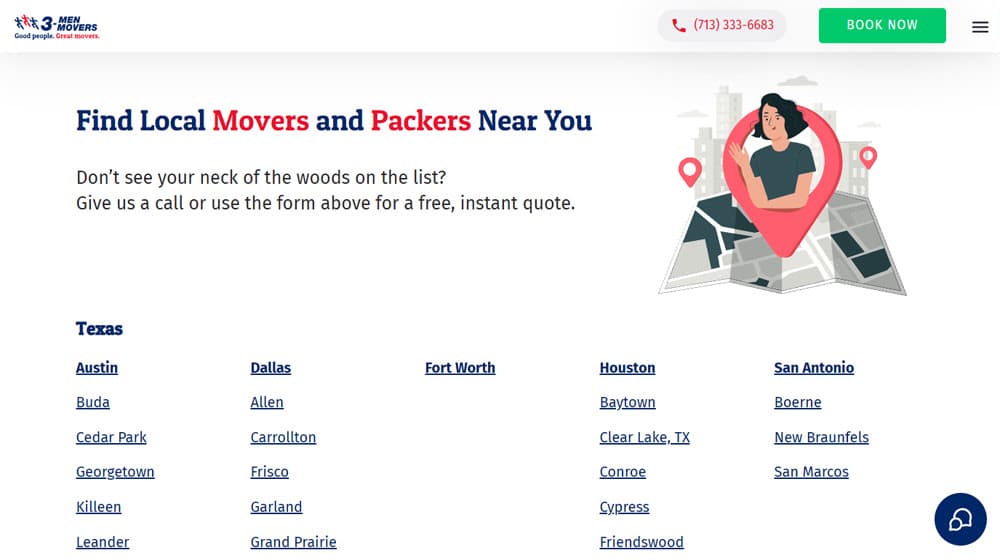
On the other end of the scale, you might have a more local business. A small lawncare company, for example, might list only a couple of neighborhoods or areas of a city as service areas, because it's not viable in a time and money sense to go further out for service.
The important part is making sure that you cover the areas you're willing to do business within, without adding service areas where you won't do business. If that means being a little narrower with your definition than you otherwise would, that's just how it works.
Are There SEO Rules for Service Areas?
Most of what I've focused on is with Google's Business Profiles, because that's where Google gets a lot of its information to populate the Local Pack and it's where most local SEO is centered.
What about more organic SEO, though? Are there limitations on how many service areas you can make on a site and have it appear in local searches?
Well, as we can see from the Terminix example, there really isn't. Whether you're listing all of the neighborhoods within a city, all of the cities within a state, or all of the states within a country, your list of service areas on your website can be as long as you need it to be.
The fact is, Google isn't going to penalize you for having a business that operates in more locations than your competitors.
What they will penalize you for is the ways you might exploit this.
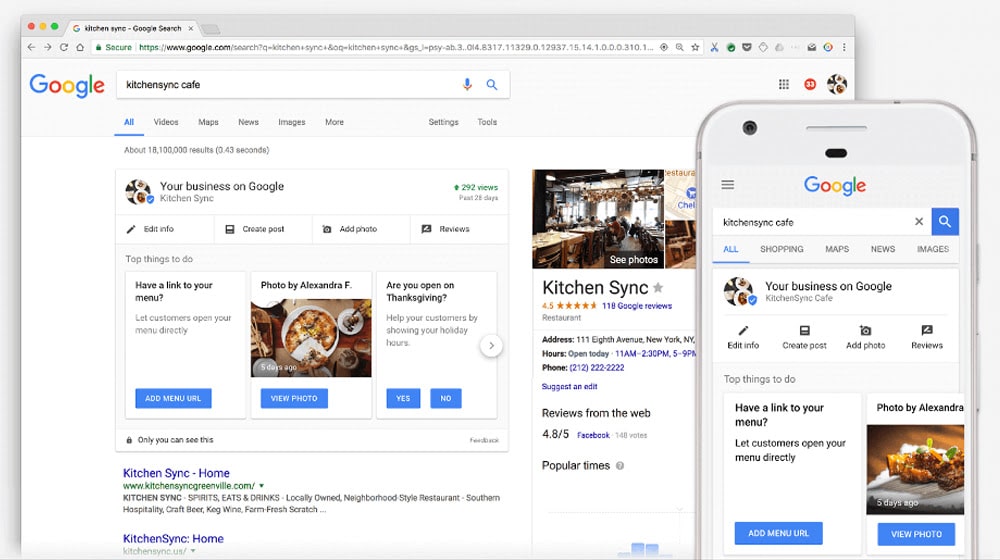
A lot of pre-Panda SEO from back in the 2000s focused on this kind of exploit. Making 50 different identical pages, where the only difference between them is a change in the city name, is a duplicate content problem. Terminix gets around this by generating unique enough content for each page.
Fortunately, Google doesn't necessarily penalize sites for this kind of behavior anymore. That's because the main reason people did it before was so that numerous entries in the SERPs would all be their brand. Google deduplicates search results now, though. When you search for pest control, even if you're technically within the service area of half a dozen locations, only the one closest to you will appear.
Google does this with information they have about you when you search, mostly your IP address. Even if there are other branches around, you get the one closest to where Google thinks you are, and the others don't impact you.
This is an improvement over having to worry about duplicate content for service pages.
The biggest pitfall is just businesses that try to cram every service area into one page rather than making distinct service area pages. This can, sometimes, come across as keyword stuffing. Even then, it can work; a restaurant with a location finder has all those locations listed on one page, and they aren't penalized for it.
The fact of the matter is, Google is a lot smarter than it used to be, and has a lot more ways to prevent abuse of keywords and service areas, while still providing relevant information to people who need it.
How to Handle Multiple Service Areas for a Business
So, what's the best way to handle a business with multiple service areas?
- Do you make individual websites for them? Pestcontrolaustin.com versus pestcontroldallas.com versus pestcontrolftworth.com?
- Do you make individual service page microsites on one domain? Pestcontroltexas.com/austin, pestcontroltexas.com/dallas, and so forth?
- Do you make one overall service page and a location search? Pestcontroltexas.com/services with a map and a list of addresses?
In my time in marketing, I can safely say that all of these can work fine. I would recommend against the first one, but mostly because it's a lot of redundant domain name registration and management, so you're spending a lot of money and time you don't need to otherwise spend. It can be fine for smaller businesses with a couple of locations, though.
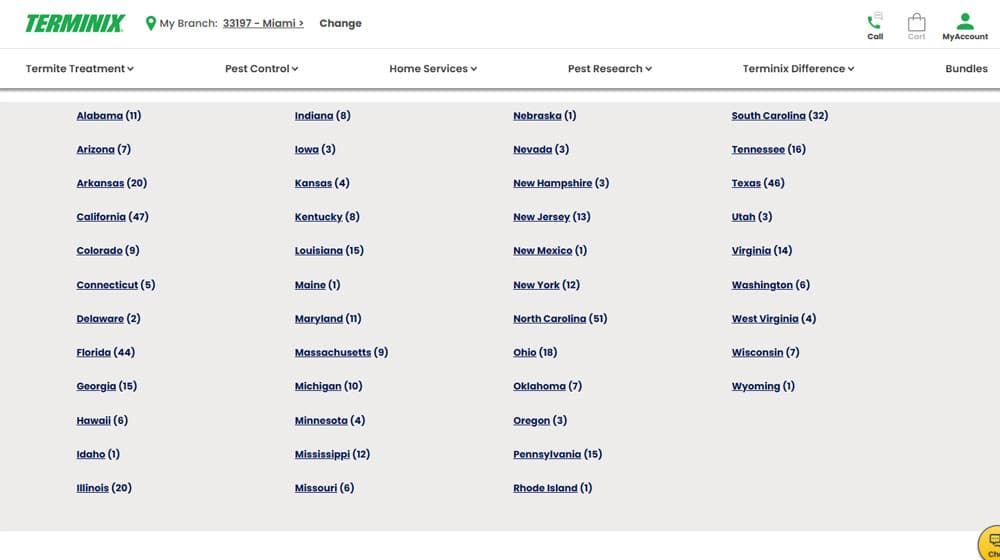
Is one option better than another?
Not really. As long as you have service pages that describe your services, and valid NAP and other information for each location so Google can scrape it for their maps and infoboxes (preferably fueled with schema markup), it really doesn't matter.
Now, if you're creating dedicated location and service area pages and they aren't ranking, you might have certain problems you can solve. If they're missing critical information, if they aren't specific enough about your services and locations, if your other SEO metrics are falling behind, these can all hold your service pages back. I have a whole guide to troubleshooting this issue here.
To bring things back to the original question, though, I don't believe there is such a thing as "too much" when it comes to service areas, unless you're doing something really obnoxious like making a new service area page for every street in your city. Everything else is smoothed over by good faith and modern algorithms.








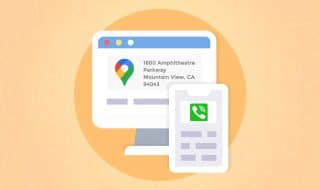

Comments